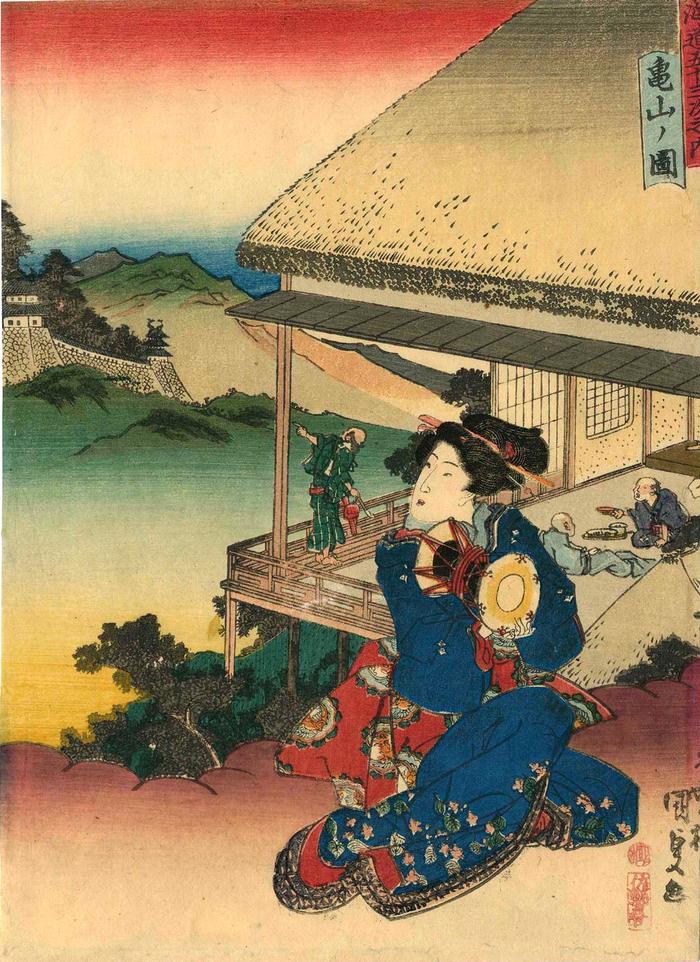Utagawa Kunisada (歌川国貞) / Toyokuni III (三代豊国) (artist 1786 – 01/12/1865)
View of Kameyama (Kameyama no zu: 亀山ノ図) from the series Fifty-three Stations of the Tōkaidō Road (Tōkaidō gojūsan tsugi no uchi: 東海道五十三次之内)
ca 1838
Signed: Kōchōrō Kunisada ga (香蝶楼国貞画)
Publisher: Sanoya Kihei
Censor's seal: kiwame
Museum für angewandte Kunst, Vienna
Museum of Fine Arts, Boston
Honolulu Museum of Art
National Diet Library
Spencer Museum of Art
Ishikawa Prefectural Museum of Art - they date their copy to 1836
Bryn Mawr
Honolulu Museum of Art
Berkeley Art Museum and Pacific Film Archive, the University of California
Fujisawa Ukiyo-e Museum
Victoria and Albert Museum
Nelson-Atkins Museum of Art This is number 47 in the series. The curatorial files at the Museum für angewandte Kunst in Vienna say: "The picture of the Kameyama 亀 山 station in the background was conceived by Kunisada himself and shows three men eating and drinking sake in an inn (man on the right with sake bowl = sakazuki). The man on the left is enjoying the beautiful view and the view of Kameyama Castle. In the foreground a woman with a snare drum (tsuzumi 鼓) in her hand. Her blue kimono is decorated with flowers and her red obi 帯 with birds. The coat of arms (mon) that can be seen on the sleeves and shoulders also shows two stylized birds."
****
If you click on this image you will notice the shachi (鯱) rooftop decorations on the castle in the center background. The shachi is a "mythical carp with the head of a lion and the body of a fish" which is an auspicious symbol of protection and well-being.
****
Kunisada did not use Hiroshige's print of Kameyama as a template. In fact, the prints are completely different. The Hiroshige is a snow-bound scene.
****
The castle of Kameyama no longer exists, but as of 1969 one could still see the remains of the steep walls that supported it.
****
There is another copy of this print in the Worcester Art Museum.
****
Illustrated in a small color reproduction in Kunisada's Tokaido: Riddles in Japanese Woodblock Prints by Andreas Marks, Hotei Publishing, 2013, page 74, T24-47.
Sanoya Kihei (佐野屋喜兵衛) (publisher)
landscape prints (fūkeiga 風景画) (genre)
beautiful woman picture (bijin-ga - 美人画) (genre)
